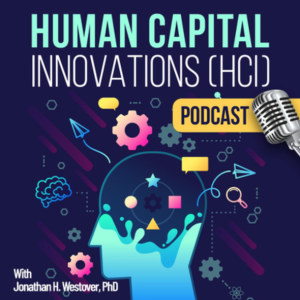 In this podcast, Kevin Hancock speaks with Human Capital Innovations Podcast host Dr. John Westover about shared leadership and employee-centric organizations. They discuss the differences, benefits, and drawbacks of capital-centric organizations and how the shift to shared leadership has impacted Hancock Lumber.
In this podcast, Kevin Hancock speaks with Human Capital Innovations Podcast host Dr. John Westover about shared leadership and employee-centric organizations. They discuss the differences, benefits, and drawbacks of capital-centric organizations and how the shift to shared leadership has impacted Hancock Lumber.
“We have been at it for over a decade, so we have very good empirical evidence. Our performance in every category we measure took off. What’s so interesting is, the performance took off when we made the people in the company, not the company, the first priority.” – Kevin Hancock
Click here to listen to the full podcast.
Here are a few highlights from the podcast (click here for the full transcription):
- Now, this is where the leadership epiphany kicked in. Having done that say several hundred exchanges, several hundred times, here is what struck me, John. People already knew what to do. They didn’t actually need a top-down CEO direct management driven directive. What they really needed was the confidence and encouragement and safety and the culture of the company to trust their own voice and act on their own judgment. And that’s when it started to hit me that maybe partial loss of my own voice, which I only previously ever thought of as a hindrance or a liability or quite literally a pain in the neck, was actually a gift and a blessing and an invitation to lead differently in a way that strengthens the voices of others. And that’s what really got me originally into this idea of dispersed power, shared leadership, and an employee-centric company. (07:28-08:52)
- So this is really all about flipping the script, to your point. That the old business model is really about the employee exists to serve the corporation, the employee is an asset of the corporation to be deployed. The new model, which is such a better fit for the 21st century, is the company exists to serve the people who work there. And if a company becomes exceptional at serving the people who work there, I guarantee you those people will make sure the company soars. So it’s a really nuanced flip of the script. This will dramatically improve corporate performance, this approach to thinking differently about engaging employees. But that really becomes the outcome of a higher calling, which is honoring human beings as human beings at work. (15:43-16:55)
- Our company is one of the oldest in America, it goes back to the 1840s. Just to put the power of an employee-centric approach and perspective, I’ll share this, we ended up making more money in the last 10 years than we did from 1848-2012. And the company had done well enough to exist for over 150 years, but our performance in every category we measure just took off. And what’s interesting is the performance of the company took off by making the people of the company, not the company, the first priority. It’s very counterintuitive and yet so sensible. (18:41-19:36)